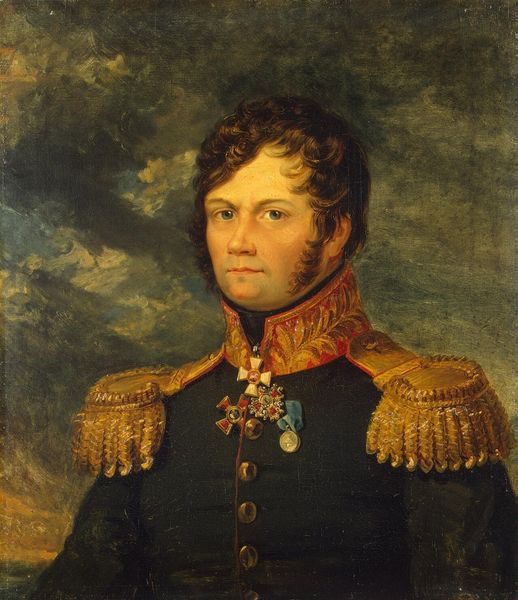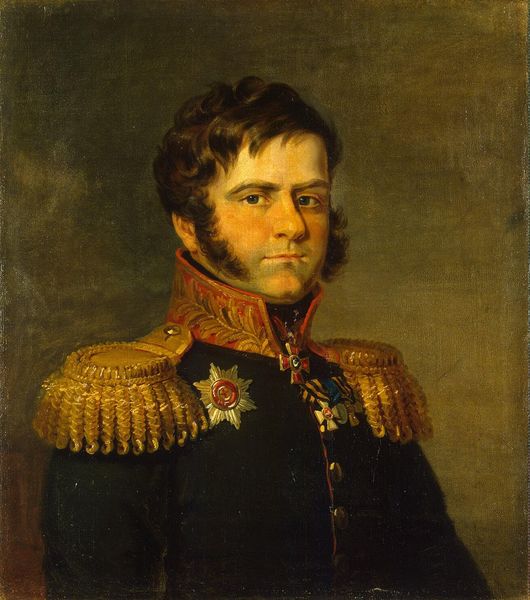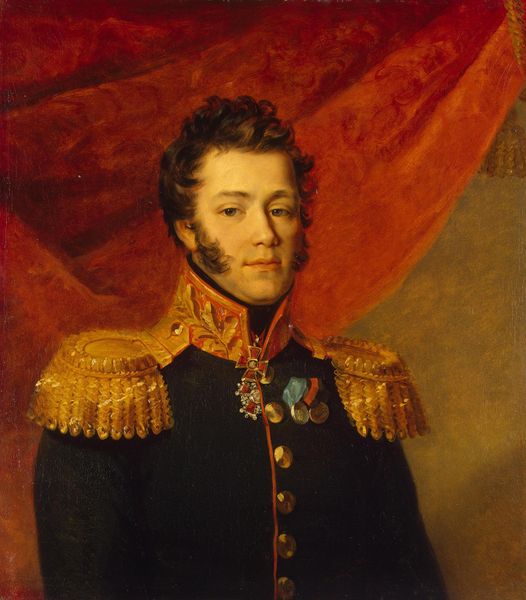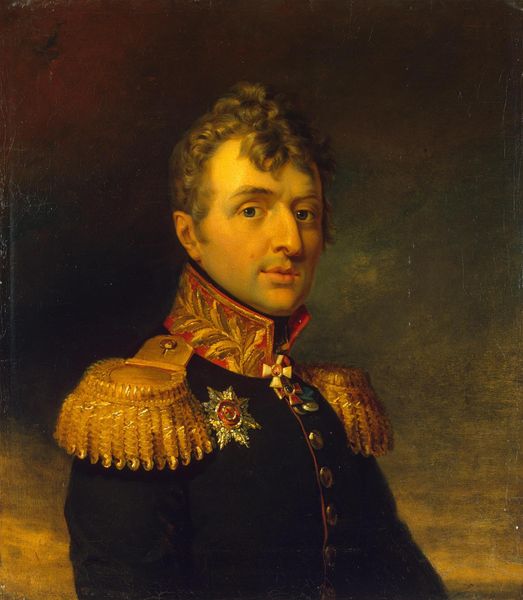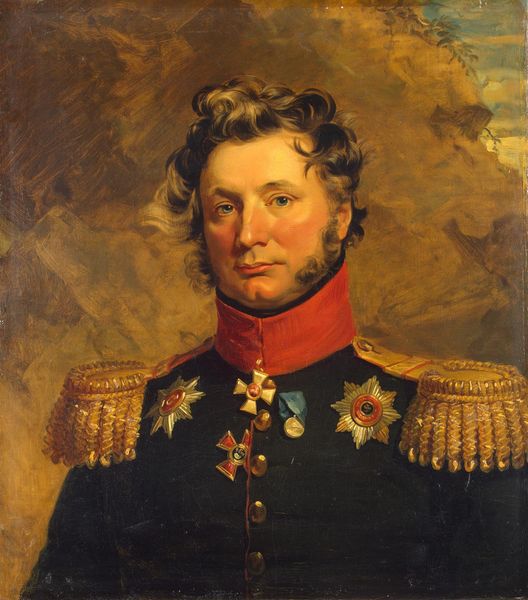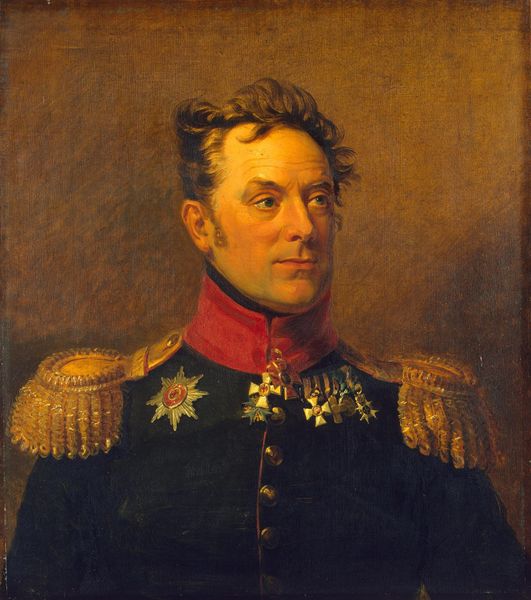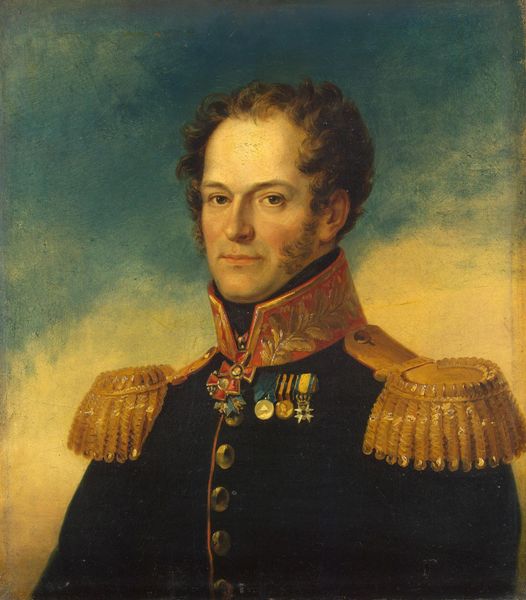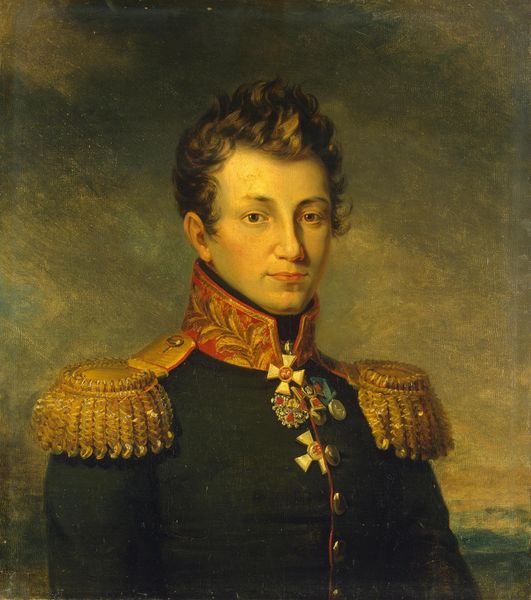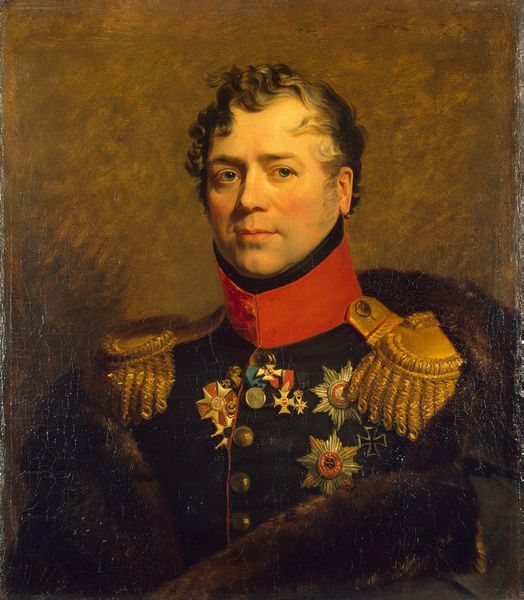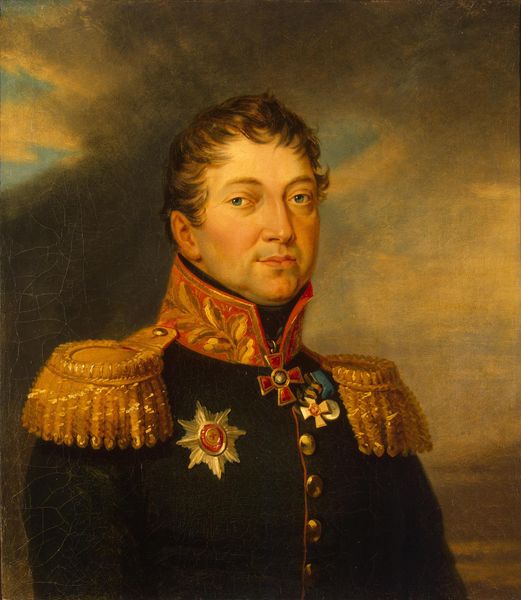
painting, oil-paint
#
portrait
#
painting
#
oil-paint
#
romanticism
#
history-painting
Copyright: Public domain
Editor: So, this is George Dawe’s “Maxim Ivanovich De Damas, Russian General” painted in 1827. It's an oil painting and it's quite striking. I’m drawn to the opulence of the general’s attire and his composed demeanor. What's your take on this particular piece, especially considering the historical context? Curator: This portrait needs to be viewed through a lens of power and social standing. These commissioned works reinforced a specific image of the Russian aristocracy, especially following the Napoleonic Wars. Dawe, an English artist, became the court painter, which tells us something about the political dynamics and the cultural influences at play. He’s literally painting a picture of Russian authority for the Russian court, but he is doing so as an outsider, and in a style appealing to Western sensibilities. Notice the romanticised ideal of leadership: a stern but approachable face framed by luxurious ornamentation and symbolic medals. Editor: That’s fascinating. The 'outsider' perspective brings a new layer of understanding. How did the public at the time view such portraits? Curator: They were intended to impress, to legitimize power, and to present an image of strength and continuity. These paintings weren’t just about individual likeness; they were about projecting an image of the Empire itself. These images served a state function: Dawe was asked to represent figures, that through service to the crown, maintained power in Russia's socio-political hierarchy. We need to consider the image alongside statecraft, in a broader visual context. What do you see beyond the man himself? Editor: I see the visual construction of an ideal – perhaps even a propaganda piece intended to solidify support for the Tsarist regime. It's interesting how the artist, Dawe, became a tool in that process. It makes you wonder about his intentions and the subtle messages he might have embedded, consciously or not. Curator: Exactly! Understanding Dawe's role and artistic choices highlights the complex relationship between art, power, and social control in 19th-century Russia. Editor: It changes how I look at portraiture in general. I appreciate your shedding light on art's function as more than just aesthetics. It's eye-opening!
Comments
No comments
Be the first to comment and join the conversation on the ultimate creative platform.
